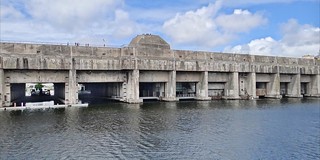The paradox by which no country knows exactly how long its coasts and borders measure
How long are the borders and coastlines of your country? It seems like an easy question, but not even public institutions agree.
Let's look at the example of Spain. According to the National Statistics Institute (INE), Spain has 3,905 kilometers of coastline. However, the website of the National Geographic Institute (IGN) states that "Spain has approximately 8,000 kilometers of coastline". However, two years ago, Teresa Ribera, third vice president of the government, stated that Spain has "more than 10,000 kilometers of coastline". In turn, the CIA World Factbook states that Spain has 4,964 km of coastline. How is it that there are such great disparities when it comes to measuring our coasts?
It must be said that even though there are different numbers, it does not mean that these measurements are wrong, although it may seem illogical to say so. This is the coastline paradox, formulated by the English mathematician Lewis Fry Richardson (1881-1953). This paradox is due to the fact that the irregularity of the coasts causes their length to depend on the measurement method used. This paradox also explains why Norway, the country with the longest coastline in Europe (due to its 239,057 islands and more than 1,700 fjords) has 25,148 kilometers of coastline according to CIA World Factbook and 53,199 kilometers according to < a href="https://web.archive.org/web/20120419075053/http://earthtrends.wri.org/text/coastal-marine/variable-61.html" rel="noopener" target="_blank">World Resources Institute.

Something similar occurs with borders, because although some countries have part of their borders drawn with straight lines, there is another part that conforms to geographical accidents. Although it is common for countries to agree on the length of their common borders, there are also disparities. The YouTube channel "¿Y si?" has published an excellent video explaining this paradox (the video is in Spanish, you can activate the automatic subtitles in English in the bottom bar of the player):
---
Main photo: European Space Agency (ESA).
|
Don't miss the news and content that interest you. Receive the free daily newsletter in your email: Click here to subscribe |
- Lo más leído
- A large collection of Volkswagen cars hidden in an abandoned mine in Switzerland
- The Saint-Nazaire submarine base, one of the last bastions of nazi Germany
- The 'Bomber Glacier': The wreckage of a B-29 on a remote mountain of Alaska
- An old Soviet military plane abandoned from 1971 on a Russian island near Alaska
- The unknown Soviet female cosmonaut who died on a mission: history or hoax?
- A desert in which three strategic bombers from the Cold War are abandoned
- The infiltration of a group of Spanish explorers into the Russian aircraft carrier Minsk

 ES
ES






Opina sobre esta entrada: